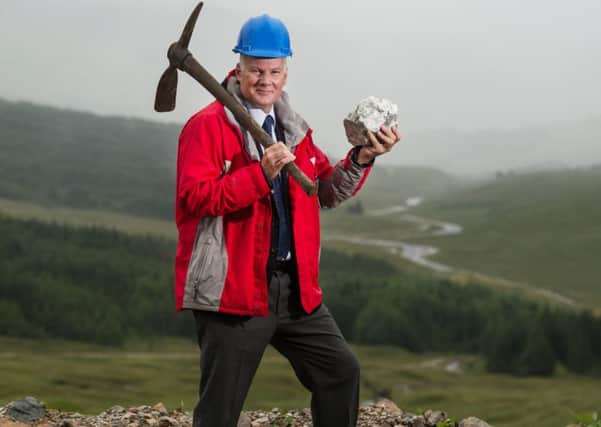The Big Interview: Scotgold Resources chief executive Richard Gray


It is home to more than 15,000 people and the site’s management stresses that the area is a “living, working landscape”.
The latter aspect has in fact proved pivotal in the park’s authority board a few days ago green-lighting an application for Scotland’s first commercial gold mine at Cononish, Tyndrum.
Advertisement
Hide AdAdvertisement
Hide AdBoard convener James Stuart said the unanimous approval came after concluding that the short- to medium-term impact will be more than compensated for by factors such as longer-term environmental gains as well as the social and economic benefits for the local community and beyond.
“The national park is a special place,” Stuart explained. “But it is also a place where people live and work and it is the park authority’s job to balance the need for development with the heritage and conservation of this unique landscape.”
The go-ahead enables Scotgold Resources to finally fire up the mine’s development, in what managing director and chief executive Richard Gray describes as a real landmark moment.
“We have had permission before but we’ve never had [it] with such a good plan in place,” says Gray. Previous plans were more complex, needed “a lot more work and a lot more money to get off the ground and really we’ve never managed to get the two together at the same time – whereas now we have real opportunity to do that”.
The firm now has a third of the capital required “in the bank”, with about £3 million generated by a rights issue at the tail end of last year. With planning permission now under its belt, Scotgold is now looking to raise approximately £7m in order to get the mine into production and move the company forward.
In terms of potential funding sources, nothing has been ruled out, according to Gray. He highlights strong interest from an equity perspective as well as opportunities on the vendor financing side plus more conventional debt-type options.
“We’ll be looking at what is the best package for us as a whole to get that all together, but I expect there to be elements of all three,” he says.
Scotgold was founded in 2007, and its name belies its Australian domiciliation, but it is “in essence a UK company”, says Gray, noting that its headquarters are effectively its office on the platform of Upper Tyndrum station.
Advertisement
Hide AdAdvertisement
Hide AdThe firm delisted from the Australian Securities Exchange in 2016, while its shares were admitted to trading on London’s Alternative Investment Market in 2010, and sparkled after Tuesday’s planning permission news. Furthermore, Gray points out, its chairman and major shareholder Nat le Roux grew up in Scotland.
Gray sees huge appetite for Scottish gold, with the business in June announcing that it had struck a deal to supply two jewellery manufacturers north of the Border – Orkney designer Sheila Fleet and Edinburgh-based luxury brand Hamilton & Inches, which in its latest annual results flagged soaring overseas demand.
The agreement covered the first refining batch of about 16 ounces of gold from its bulk processing trial, and Gray said at the time that it “validates our belief in the strength and value of combining Scottish gold of proven provenance with the skill and prestige of the Scottish jewellery industry”.
Scotgold said the premium received was higher than the 30 per cent reserve stipulated for its auction the previous November of the first ten one-ounce coins, or rounds, each stamped with the Scottish Gold Mark of the stag’s head and minted by Baird & Co.
Gray adds: “We’ve always believed [a premium] to be there, but to be prudent in terms of the returns on the project we’ve never accounted for it.
“What this little trial has demonstrated is that we’ve got very good reason to believe we will [be able to] sell at a premium.” The amount that can be sold obviously depends on how much the market can absorb, he adds. Nonetheless, Scotgold has had interest from more than 50 other institutions including jewellers, “so when we get into production we believe we’ll be able to offtake a significant amount at that premium”.
The firm in September reported its annual results to 30 June, saying it had reduced its loss for the year to about A$1.35m (roughly £760,000) from about $1.5m in the prior 12-month period, and had A$572,332 in cash at the end of the financial year.
The firm believes the Cononish site houses about 200,000 ounces of gold and Gray says the firm’s operations are very much at the “micro” end of the precious metal mining scale in terms of resource and production rates.
Advertisement
Hide AdAdvertisement
Hide Ad